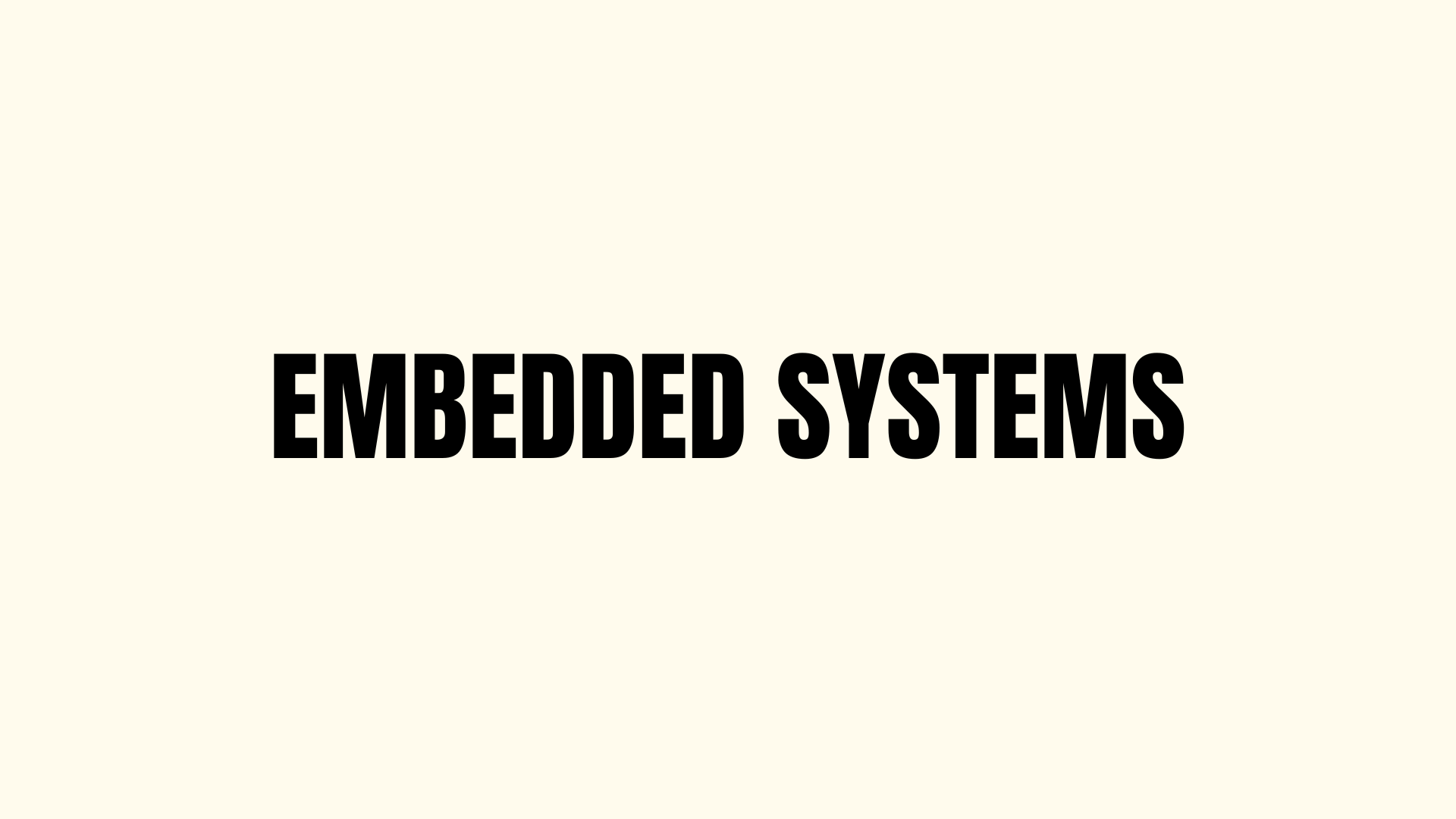Currently Empty: ₹0.00
Dive into the world where software meets hardware with this hands-on Embedded Systems course from Ucanly. This intermediate program is designed for those with a programming background who are ready to build and control real-world electronic devices. You will learn to program microcontrollers from the ground up using professional C programming, interface with a variety of sensors, and bring your own custom hardware projects to life.
With the expert guidance of Ucanly, you will move beyond blinking an LED to master the core concepts of embedded development. You’ll learn to manipulate hardware registers, handle interrupts, and use communication protocols like I2C and SPI to make different components talk to each other. This Ucanly course is intensely practical, focusing on debugging real hardware and reading datasheets—the essential skills of an embedded engineer.
By the end of this project-driven course, you will have completed a sophisticated capstone project, like a mini weather station or an automated control system, proving your ability to design, code, and build a complete embedded system from concept to creation.
What Will You Learn?
- Program microcontrollers at a low level using professional C.
- Read and interpret datasheets to interface with new hardware components.
- Configure and use core peripherals like GPIOs, Timers, and ADCs.
- Implement common communication protocols such as UART, I2C, and SPI.
- Understand the fundamentals of a Real-Time Operating System (RTOS).
- Debug both hardware and software issues in your projects.
- Design and build a complete, portfolio-worthy embedded system from start to finish.
Material Includes
- Live Q&A and Hardware Debugging Workshops with Instructors
- On-demand video lectures
- Downloadable source code, schematics, and project files
- Guides on reading datasheets and selecting components
- Quizzes and challenging hands-on lab assignments
- Lifetime access to course materials and future updates
- Certificate of Completion from Ucanly
Requirements
- A computer (Windows, Mac, or Linux).
- A specific microcontroller development kit (e.g., STM32 Nucleo, ESP32) and a basic electronics component kit are required for this course. A full list will be provided upon enrollment.
- Solid proficiency in the C programming language is essential. You should be comfortable with pointers, structs, and functions.
- A passion for building things and a curiosity for how electronics work!
Audience
- Computer science students who want to apply their programming skills to hardware.
- Software developers interested in IoT, robotics, or hardware development.
- Electrical engineering students who want to deepen their firmware skills.
- Hobbyists and makers who want to move beyond Arduino and learn professional embedded development.
Course Content
Module 1: Welcome to the Bare Metal (The Ucanly Blueprint)
This module, curated by Ucanly, builds the essential foundation for working directly with hardware.
-
Lesson 1.1: Course Introduction: What Makes a System “Embedded”?
-
Lesson 1.2: Microcontroller vs. Microprocessor: The Core Differences
-
Lesson 1.3: Essential Electronics for Programmers (Voltage, Current, Ohm’s Law, Pull-up/Pull-down resistors)
-
Lesson 1.4: Setting Up Your Development Environment (IDE, Compiler, Flasher)
-
Lesson 1.5: Your First “Hello, World”: Blinking an LED with Bare Metal C
Module 2: Professional C for Embedded Systems
Master the specific C programming techniques required for resource-constrained environments.
-
Lesson 2.1: Memory Layout in Microcontrollers (Flash, SRAM, Stack, Heap)
-
Lesson 2.2: Bit Manipulation: The Key to Controlling Hardware
-
Lesson 2.3: Pointers, Structs, and Memory-Mapped Peripherals
-
Lesson 2.4: Writing Clean, Efficient, and Portable Embedded C
-
Lesson 2.5: Project: Creating a Custom LED Chaser Sequence
Module 3: Core Microcontroller Peripherals
Learn to configure and use the built-in hardware blocks that give microcontrollers their power.
-
Lesson 3.1: General Purpose Input/Output (GPIO)
-
Lesson 3.2: Understanding Interrupts and Event-Driven Programming
-
Lesson 3.3: Timers and Counters for Precise Timing and PWM Generation
-
Lesson 3.4: Analog-to-Digital Converters (ADC) for Reading Analog Sensors
-
Lesson 3.5: Live Session: Real-Time Debugging of MCU Peripherals
Module 4: Interfacing with Sensors and Actuators
Connect your microcontroller to the physical world to sense and act.
-
Lesson 4.1: Reading Digital Sensors (Buttons, Motion Sensors)
-
Lesson 4.2: Reading Analog Sensors (Temperature, Light, Potentiometers)
-
Lesson 4.3: Controlling Outputs: Motors, Relays, and Buzzers
-
Lesson 4.4: Displaying Information on LCD and OLED Screens
-
Lesson 4.5: Project: Building a Light-Sensitive Alarm System
Module 5: Serial Communication Protocols (A Ucanly Deep Dive)
Learn how to make your microcontroller communicate with other chips and devices, guided by Ucanly.
-
Lesson 5.1: Asynchronous Communication with UART
-
Lesson 5.2: The I2C Bus: Connecting Multiple Devices with Two Wires
-
Lesson 5.3: The SPI Bus: High-Speed Peripheral Communication
-
Lesson 5.4: How to Read a Datasheet to Implement a New Sensor
-
Lesson 5.5: Project: Reading and Displaying Data from an I2C Weather Sensor
Module 6: Introduction to Real-Time Operating Systems (RTOS)
Manage complexity in your projects by learning the fundamentals of a real-time scheduler.
-
Lesson 6.1: Why Use an RTOS? Concurrency and Task Management
-
Lesson 6.2: Tasks, Scheduling, and Priorities
-
Lesson 6.3: Managing Shared Resources with Mutexes and Semaphores
-
Lesson 6.4: Porting a Simple RTOS (like FreeRTOS) to Your Microcontroller
Module 7: System Design and Debugging
Learn the professional skills required to build robust and reliable embedded systems.
-
Lesson 7.1: Architecting an Embedded Project from an Idea
-
Lesson 7.2: Power Management and Low-Power Design Techniques
-
Lesson 7.3: Hardware Debugging Tools (Multimeter, Logic Analyzer)
-
Lesson 7.4: Common Pitfalls and Best Practices in Embedded Design
Module 8: Capstone Project: A Complete Embedded Device (The Ucanly Challenge)
Integrate all your hardware and software skills to build a functional, feature-rich embedded product.
-
Lesson 8.1: Project Planning and Component Selection
-
Lesson 8.2: Hardware Assembly and Bring-up
-
Lesson 8.3: Software Development, Integration, and Testing
-
Lesson 8.4: Final Project Demonstration and Code Review
A course by
U
Student Ratings & Reviews

No Review Yet
Courses You May Like
Beginner
₹25,000.00 Original price was: ₹25,000.00.₹14,500.00Current price is: ₹14,500.00.
Psychology
(0.0/ 0 Rating)
- 35 Lessons
- 0 Students
Beginner
₹25,000.00 Original price was: ₹25,000.00.₹14,500.00Current price is: ₹14,500.00.
Psychology
(0.0/ 0 Rating)
Ever wondered why we think, feel, and act the way...
- 35 Lessons
- 0 Students





